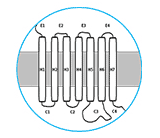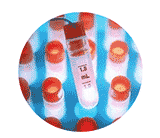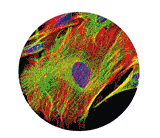Featured Products
Who we are
Dexorgen, Inc. is an advanced biotechnology company headquartered in the state of Maryland. We offer simple and high throughput solutions to aid scientists in solving complex problems. One of our primary focuses is on drug discovery. We are a leader in providing live cell based assays for novel compound screening. Our patented ACTOne based phosphodiesterase (PDE) and G-protein coupled receptor (GPCR) cell lines offer clients the ability to conduct efficient screenings of new compounds in a physiologically accurate, live cell based environment. We are the first in the world to produce commercially available cell lines to screen for compounds that target PDEs. We also provide a number of unique biochemical assay kits and specialty dyes. We strive to deliver high quality products that help our fellow scientists in the discovery process.
In the past five years, Dexorgen participated in Tox21, a federal Collaboration involving the NIH, EPA and FDA. We developed assays for nuclear hormone receptors, dye based mitochondria toxicity assays. Now, we are developing the assays to evaluate the toxicities on TSHR and TRHR.
Our services
- Compound screening and target selectivity profiling
- Assay development
- Mechanism of action characterization
- Reagent (e.g. stable cell line) development
- Primary cell culture
- Cell engineering with CRISPR and shRNA
- Contract research or collaborations with pharmaceutical companies, biotech companies, universities, and governmental institutes
ACTOne Assay Principle
ACTOne Technology is the first in its class in providing real-time information on intracellular cAMP changes in a high-throughput format without a cell lysis step. The assay works with cell lines that contain a proprietary exogenous Cyclic Nucleotide-Gated (CNG) channel. The channel is activated by elevated intracellular levels of cAMP, resulting in ion flux (often detectable by calcium-responsive dyes) and cell membrane depolarization which can be detected with a fluorescent membrane potential (MP) dye. The ACTOne cAMP assay allows both end-point and kinetic measurement of intracellular cAMP changes with a FLIPR, or a fluorescence microplate reader. It is a simple homogenous assay involving only dye and compound addition steps, allowing easy implementation in a high-throughput environment. It has been successfully used to measure Gs and Gi coupled GPCR activity.





